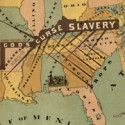 Good visual presentations enhance juror attention, cognition and retention in the courtroom. By providing comparisons and reference points familiar to the juror, demonstratives can help communicate difficult concepts and data. Understanding of spatial information (e.g., positions, sizes and movement) particularly benefits from graphical representation.
Good visual presentations enhance juror attention, cognition and retention in the courtroom. By providing comparisons and reference points familiar to the juror, demonstratives can help communicate difficult concepts and data. Understanding of spatial information (e.g., positions, sizes and movement) particularly benefits from graphical representation.
In today’s blog post, we’ll explore a diagram from NASA’s Apollo 11 Lunar Landing program and then discuss takeaway lessons for litigators planning trial graphics. [Read more...]
 We recommend to our readers a recent New Yorker article by
We recommend to our readers a recent New Yorker article by  Good animations can make difficult patent language and complicated patent diagrams come to life. An animation can make a bored judge or juror wake up, pay attention and engage with your argument.
Good animations can make difficult patent language and complicated patent diagrams come to life. An animation can make a bored judge or juror wake up, pay attention and engage with your argument. I love hearing the news that one of our clients had a great result using the work we did for them. The most recent big win I’m happy to report is Manatt, Phelps & Phillips, LLP, won a major lender liability/wrongful foreclosure action, obtaining a complete defense verdict in favor of its clients. Cogent Legal was hired to assist the Manatt trial team by creating graphics that helped bring order and understanding to this complex case.
I love hearing the news that one of our clients had a great result using the work we did for them. The most recent big win I’m happy to report is Manatt, Phelps & Phillips, LLP, won a major lender liability/wrongful foreclosure action, obtaining a complete defense verdict in favor of its clients. Cogent Legal was hired to assist the Manatt trial team by creating graphics that helped bring order and understanding to this complex case. I always like to share examples of what I consider powerful graphics to give attorneys ideas on what’s possible to create for use in litigation. This morning, I was struck by
I always like to share examples of what I consider powerful graphics to give attorneys ideas on what’s possible to create for use in litigation. This morning, I was struck by  Last week, Ken Broda-Bahm wrote a great piece about the recent State of the Union Address (“
Last week, Ken Broda-Bahm wrote a great piece about the recent State of the Union Address (“
 This post is by Martha Pettit
This post is by Martha Pettit



Follow Cogent Legal
Subscribe by Email